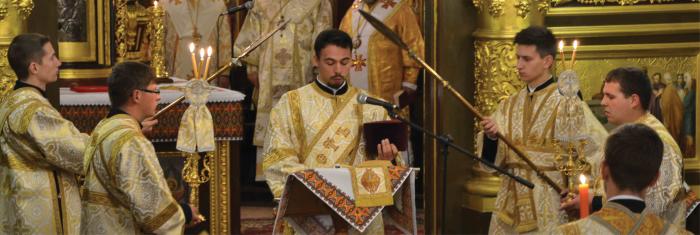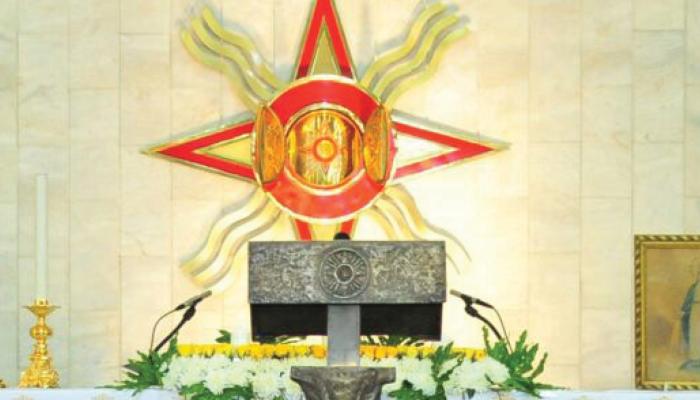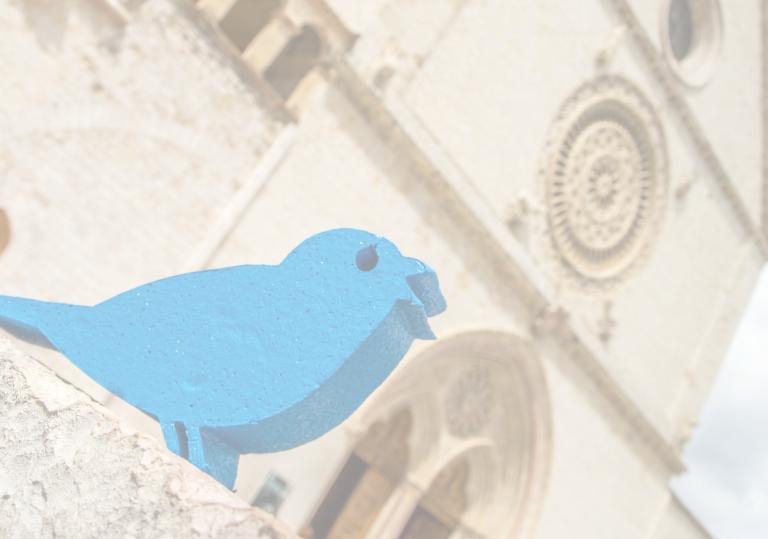
3.53 What are the main parts of the Byzantine liturgy?
Where Latin Rite Catholics speak of the “Mass” or the “celebration of the Eucharist”, the Eastern Churches speak of the Divine Liturgy. There are different rites, although the Divine Liturgy of St John Chrysostom is most commonly used for the liturgy. The original language in which St John wrote this liturgy is Greek and over the centuries it has been translated into many languages.
The Divine Liturgy consists of three main parts: the Liturgy of Preparation (the prayerful preparation of the priests and servers), the Liturgy of the Word (with readings from the Bible and prayers) and the Liturgy of Sacrifice (offering bread and wine; participation in Jesus’ gift of his life).
What does the Eucharist represent in the life of the Church?
It is the source and summit of all Christian life. In the Eucharist, the sanctifying action of God in our regard and our worship of him reach their high point. It contains the whole spiritual good of the Church, Christ himself, our Pasch. Communion with divine life and the unity of the People of God are both expressed and affected by the Eucharist. Through the eucharistic celebration we are united already with the liturgy of heaven and we have a foretaste of eternal life. [CCCC 274]
What names are there for Jesus’ meal with us, and what do they mean?
The different names indicate the unfathomable richness of this mystery: the Holy Sacrifice, Holy Mass, the Sacrifice of the Mass – the Lord’s Supper – the Breaking of Bread – the Eucharistic assembly – the memorial of the Lord’s Passion, death and Resurrection – the Holy and Divine Liturgy, the Sacred Mysteries – Holy Communion.
Holy Sacrifice, Holy Mass, the Sacrifice of the Mass: The one sacrifice of Christ, which completes and surpasses all sacrifices, is made present in the celebration of the Eucharist. The church and the faithful, through their self-offering, unite themselves with Christ’s sacrifice. The word Mass comes from the Latin dismissal, Ite, missa est, “Go now, you are sent”.
The Lord’s Supper: Every celebration of the Eucharist is still the one supper that Christ celebrated with his disciples and, at the same time, the anticipation of the banquet that the Lord will celebrate with the redeemed at the end of time. We men do not make the worship service; the Lord is the one who calls us to worship God and is mysteriously present in the liturgy.
The breaking of bread: “The breaking of bread” was an old Jewish ritual at meals, which Jesus employed at the Last Supper to express his gift of self “for us” (Rom 8:32). In the “breaking of bread” the disciples recognized him again after the Resurrection. The early Church called their liturgical feasts “the breaking of bread”.
Eucharistic assembly: The celebration of the Lord’s Supper is also an assembly of “thanksgiving”, in which the church finds her visible expression.
Memorial of the Lord’s Passion, death, and Resurrection: In the celebration of the Eucharist, the congregation does not celebrate itself; rather it discovers and celebrates again and again the presence of Christ’s saving passage through suffering and death to life.
Holy and Divine Liturgy, Sacred Mysteries: In the celebration of the Eucharist, the Church in heaven and on earth unite in one feast. Because the Eucharistic Gifts in which Christ is present are, so to speak, the holiest thing in the world, we also speak about the Most Blessed Sacrament.
Holy Communion: Because we unite ourselves with Christ at Holy Mass, and through him are united with one another, we speak about Holy Communion (communio = fellowship). [Youcat 212]





